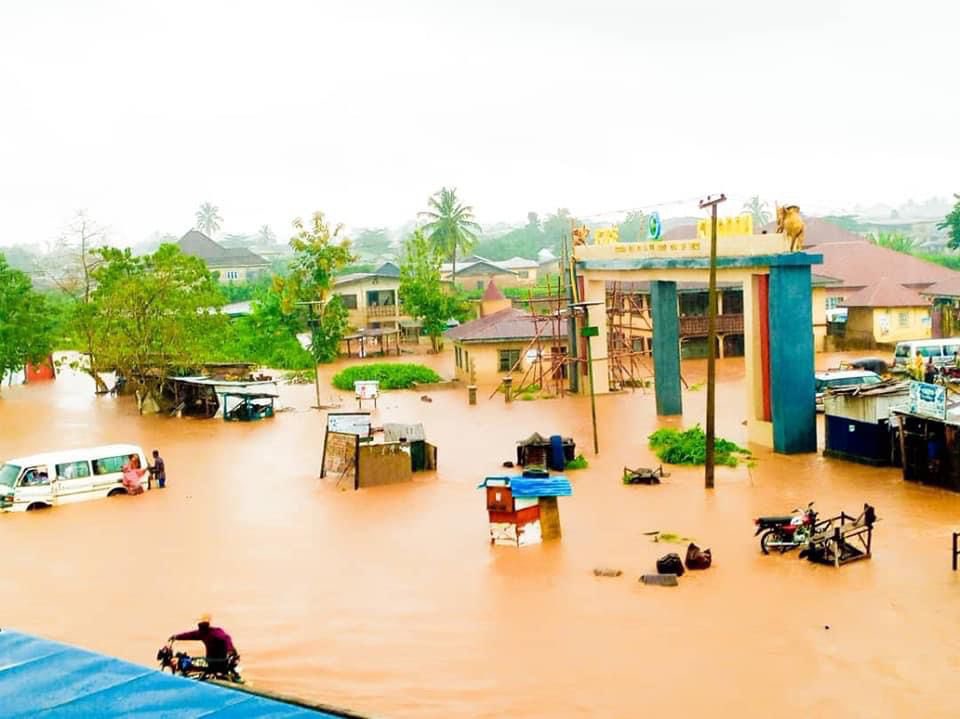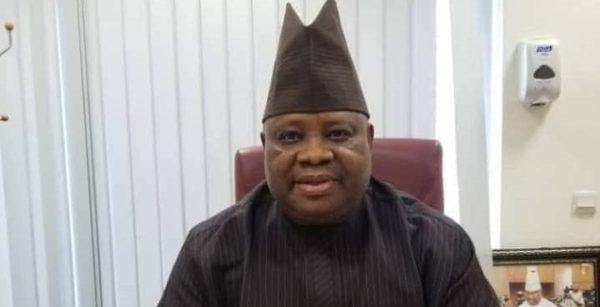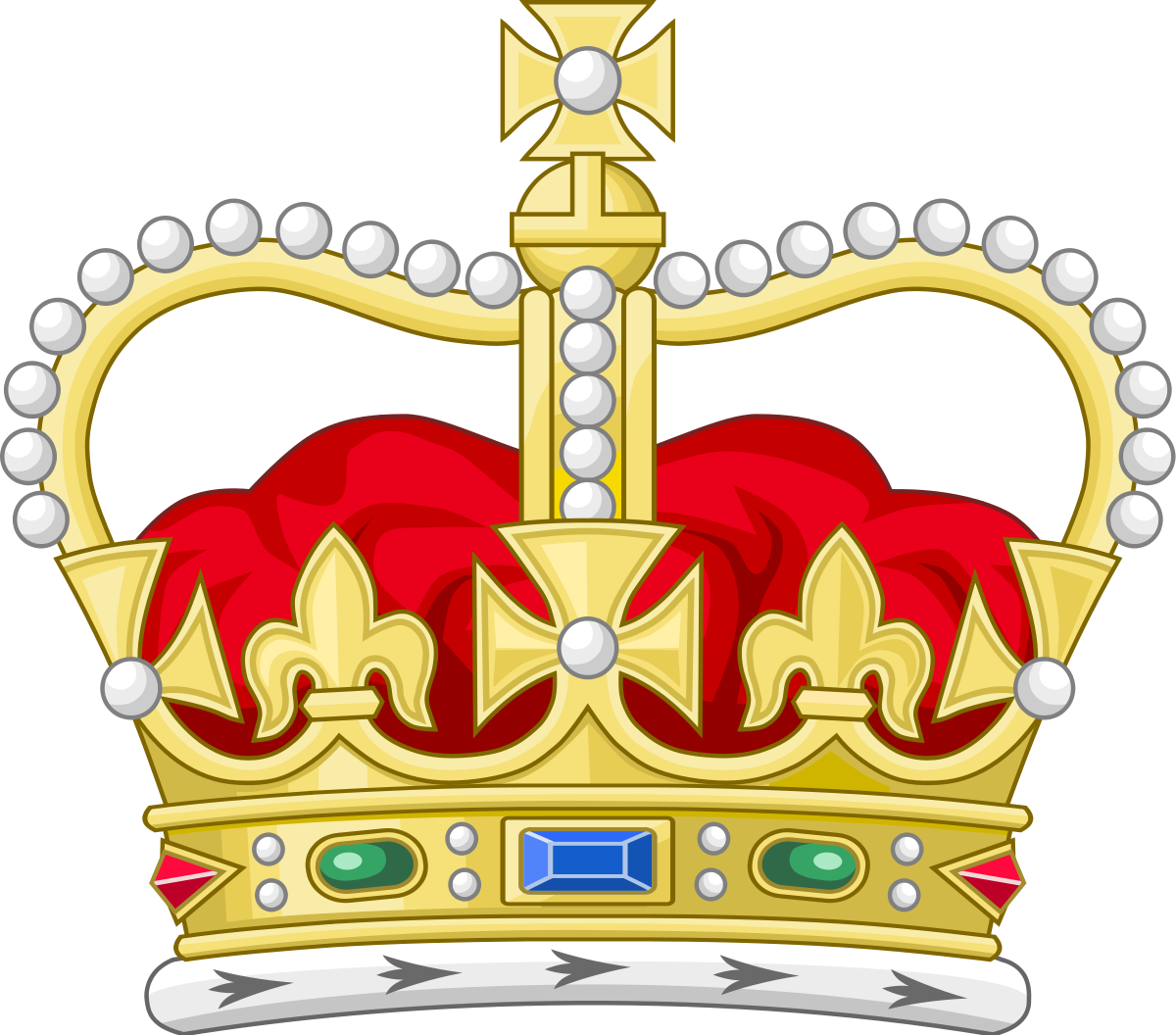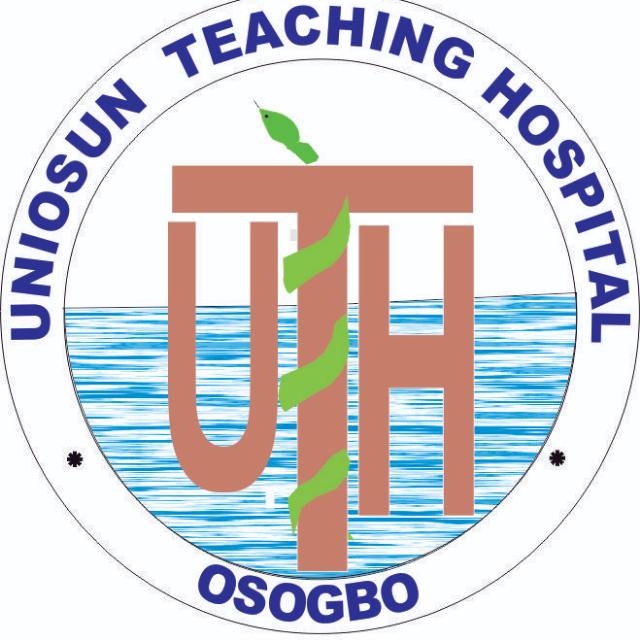Op-Ed: Do Not Forget Your Left Leg
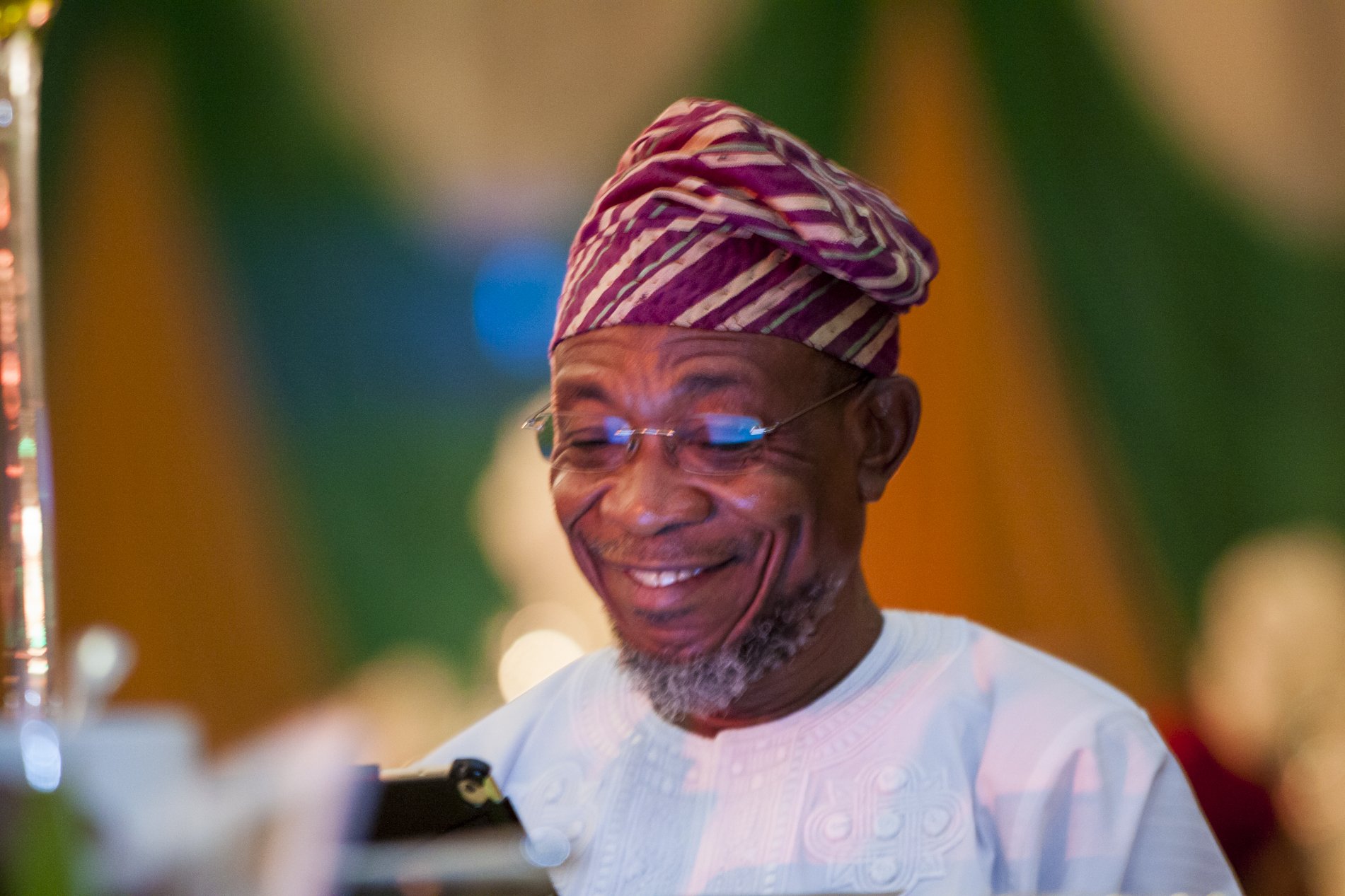

By Olowogboyega Oyebade
Are you aware that there is a peculiar challenge thrown to all workers in Nigeria on innovation? Are you aware that the world is watching? Do you know that pearls are not for pigs? Have you heard the news that the World Intellectual Property Organization (WIPO) has released its 2019 Global Innovation Index which gauges levels of innovation in 126 economies across the world in terms of education and creative output? Do you know that the World Intellectual Property Organization (WIPO) is one of the 15 specialized agencies of the United Nations , created in 1967 “to encourage creative activity and , promote the protection of intellectual property throughout the world”? Do you know that this agency this year has found that innovation is blossoming despite the global economic slowdown? Do you know that Switzerland topped the 2019 ranking with a score of 67.24 per cent while the lowest-ranked countries in the index were Niger (18.13), Burundi (17.65) and Yemen (14.49)?
Have you heard that Nigeria ranks 114th in 2019 Global Innovation Ranking in terms of businesssophistication, human capital research, infrastructure, market sophistication, creative output, and institutions? Do you know that across all the indicators, the low-middle-income countries where Nigeria belongs, ranks 5th out of all the six regions of the world? Are you aware that under innovation and knowledge absorption, Nigeria ranks 85th, ranks 122nd in Infrastructure , Human capital (119th), Market Sophistication (88th) and creative output (101st)? Do you know that there are 26 countries in the low-middle-income countries in the report and Nigeria ranks 22nd, just above Bangladesh, Nicaragua, and Zambia? Do you know that the top ten countries that make up it up in the report are Switzerland, Sweden, the United States, the Netherlands, the United Kingdom Finland, Denmark, Singapore, Germany and Israel? Do you know that Nigeria and many other countries in Africa will always appear below the margin in global competitiveness and innovation?
Do you know that over 60% of Sub-Saharan Africans will still lack access to electricity by 2020? Are you aware that Africa has an average electrification rate of 24%, while the rate in the rest of the developing world is close to 40%? Do you know that power is unreliable with the manufacturing and tourism sectors, having power on average of 56 days in a year in many countries? Do you know that the study shows that in Senegal power is out for 25 days a year, in Tanzania 63 days, in Burundi 144 days and in Nigeria, 180 days? Do you know that electrical service in Sub-Saharan Africa also costs more than in other parts of the world as we have protective tariff required in Sub-Saharan Africa standing at $0.13 USD, compared to $0.04–0.08 USD in the rest of the developing world? Do you know that one other challenge in an effort to create sustainable development in Africa is that many countries with exportable resources are land-locked without a system of transportation coordinated by weak institutions? Do you know that the population growth of sub-Saharan Africa is 2.2% annually and by 2025, it is estimated that Africa will consist of over a billion people? Conversely, do you know that less than 1% of the electricity generated in Africa originates from renewable resources?
, Do you know that statistics shows that over 640 million Africans have no access to energy, corresponding to an electricity access rate for African countries at just over 40 percent, the lowest in the world? Do you know that per capita consumption of energy in sub-Saharan Africa (excluding South Africa) is 180 kWh, compared to 13,000 kWh per capita in the United States and 6,500 kWh in Europe? Do you know that Africa’s energy potential, especially renewable energy, is enormous, yet only a fraction of it is being currently employed? Are you aware that access to energy is crucial not only for the attainment of health and education outcomes, but also for reducing the cost of doing business and for unlocking economic potential and creating jobs and reducing poverty? Do you know that unreliable energy access manifests itself in myriads of deaths annually in the operations of hospitals and emergency services; conduct of research and educational attainment; drives up the cost of doing business and discourages investment drives? Do you know that is the reason why African Development Bank has launched a New Deal on Energy for Africa, which is built on five inter-related and mutually reinforcing principles: (i) raising aspirations to solve Africa’s energy challenges; ii) establishing a Transformative Partnership on Energy for Africa; (iii) mobilizing domestic and international capital for innovative financing in Africa’s energy sector; (iv) supporting African governments in strengthening energy policy, regulation and sector governance; and (v) increasing African Development Bank’s investments in energy and climate financing? Do you know that Africa must turn around the narrative: to light up and power Africa and accelerate the pace of economic transformation, unlock the potential of businesses, and drive much needed industrialization to create jobs?
Have you heard the news? Do you know that President George Wheare of Liberia has honoured President Buhari with the highest honour of Liberia? Do you know that the gesture is a call to duty for Nigeria to assume responsibility for the development of Africa through new innovations? Do you know that the award is a Nasser Challenge? What is Nasser’s Challenge? Come along, please.
Gamal Abdel Nasser of Egypt (15 January 1918 – 28 September 1970)was the second President of Egypt, elected in 1956, 1958 and 1965 in plebiscites and served till 1970. Do you know that he came to power when the entire continent needed him? Are you aware that he led the 1952 overthrow of the monarchy and introduced the much-needed land reforms? Do you know that he nationalized the Suez Canal which was very strategic to the development of Egypt? Do you know that the Helwan city and its steel factory and the Aswan Dam done by him jump-started industrialization in Egypt? Do you know that his vision worked wonders to cement pan-Arab unity? Do you know that his social inclusion made ordinary citizens to enjoy unprecedented access to housing, education, jobs, health services and nourishment? Are you aware that following Egypt’s defeat by Israel in the 1967 Six-Day War, Nasser resigned? Do you know that on 9 June, 1967, Nasserappeared on television to inform citizens of the Egypt’s defeat and went ahead to announce his resignation on television later that day, and ceded all presidential powers to his then-Vice President Zakaria Mohieddin without prior information to the latter? Do you know that millions of protesters in Egypt and across the Arab world stormed the streets to protest and reject this sudden quit from power? On 28 September, 1970, just after the conclusion of the Arab League summit, Nasser suffered a heart attack and the man died. Do you know that over 5 million mourners attended his funeral, a testimonial that poor people honour good leaders? In one of the Summits, Nasser threw a challenge:
“Within the Arab circle there is a role wandering aimlessly in search of a hero. For some reason it seems to me that this role is beckoning to us-to move, to take up its lines, put on its costumes and give it life. Indeed, we are the only ones who can play it. The role is to spark the tremendous latent strengths in the region surrounding us to create a great power, which will then rise up to a level of dignity and undertake a positive part in building the future of mankind.”
Do you know that the aspiration of this priority area is to help Africa achieve universal electricity access by 2025? Do you know that statistics shows that for such miracle to come, it will require providing 160 GW of new capacity, 130 million new on-grid connections, 75 million new off-grid connections and providing 150 million households with access to clean cooking solutions? Do you know that feasibility studies show that this will require investment funds between US $60 billion and US $90 billion per year for the next five years? Do you know that Nigeria is trying to address the challenges? Do you know that since 2016, 40 Nigerian universities were billed to run on solar, starting with University of Ibadan? Do you know that the initiative will take all of their electricity supplies from off-grid renewable energy solutions – preferably solar power? Do you know that this initiative is based on an agreement with the German government under the Nigerian-German Energy Partnership Project that approved that solar power farms will be built across 40 universities of the Federal Government? Do you know that the solar farm in Unibadan was flagged off by the former Minister of State for Education, Anthony Anwukahon behalf of President Muhammadu in 2016? Do you know that the facility generates and supplies up to 10 megawatts (MW) of clean electricity to the school? The statement of the Minister interludes:
“That the project is commencing at the University of Ibadan should not surprise anyone. This is where the story of university education in Nigeria started. The government recently launched a programme – the Energizing Education Programme Initiative (EEPI) for this purpose, and that the EEPI is a collaborative effort of the Ministries of Education and Power, Works and Housing to get the 40 federal universities off the grid.The EEPI is aimed at providing reliable power supply … and sustainable development in our Universities.”
Hurray! Do you know that Obafemi Awolowo University, Ile-Ife, has followed suit? Are you aware that the Vice-Chancellor of the University, Prof. Eyitope Ogunbodede, while declaring open recently, the African Institute for Science Policy and Innovation International Biennial Conference, declared that the University would by October, 2019, leave national grid and generate its own power? Are you aware that by the time the University will exit the national grid, between N35m and 65m being cost of energy will be saved monthly? Do you know that he claimed that the University’s daily energy needs is below six megawatt and that the gas turbine that will power the University and its Teaching Hospital is capable of generating over eight megawatt of electricity daily? Do you know that, according to him, some neighbouring communities will also benefit from the excess energy that will be generated? Do you know that other Universities have to seize the tide by the line? The VC said:
“We are now very sure that by the end of October Obafemi Awolowo University will be generating its own electricity..”
Do you know light and other infrastructure are key? Have you read the story of creation from the Abrahamic religious perspectives? Have you wondered why God created light first? Do you know that light is symbolic for diverse purposes? Are you aware that modern development might have ended in mere dream if light has not been invented? Do you know that the location of National Control Centre in our State is one main advantage advertised to investors by Governor Adegboyega Oyetola in his frantic efforts to develop the State industrially? Do you know that with the success of Ife Power Project through gas turbine, the Free Trade Zone in Osogbo and the Dagbolu Industrial Hub will soon become gold mines?
Do you know that many industrial concerns in the country are not comfortable with the operating costs of their products thus making protectionism a mirage? Do you know that every good programme of government relies on the energy budget of the country? Do you know that the rate of unemployment will decline if we fix light? Do you know that we have to appreciate President Buhari for making frantic efforts to fix this problem? Are you aware that Nigeria has just signed 25,000MW six-year electricity deal with Siemens? Do you know Siemens? Come along, please. Breaking news cut in:
“Ondo communities threaten election boycott over 10-year power outage”. “Nigeria may soon be in total darkness” — Egbin CEO
Siemens is a German multinational conglomerate company established on 12 October 1847 in Berlin by Werner von Siemens. The company specializes in power generation technology, industrial and buildings automation, medical technology, railway vehicles, water treatment systems, fire alarms, PLM software, business services, financing, project engineering and construction. It has a total assets of €138.915 billion in 2018 and has379,000employeesas at 2019. Do you know that it is the largest industrial manufacturing company in Europe with branch offices abroad? Do you know that the company is a prominent maker of medical diagnostics equipment? Do you know that the company built the first electric locomotive in 1879? Do you know that in 1881, a Siemens AC Alternator driven by a watermill was used to power the world’s first electric street lighting in the town of Godalming, United Kingdom? Do you know that the company continued to grow and diversified into electric trains and light bulbs? Are you aware that the company built airplanes during World War I? Are you aware that the company started to manufacture radios, television sets, and electron microscopes later? Are you aware that in the 1920s, Siemens constructed the Ardnacrusha Hydro Power station on the River Shannon in the then Irish Free State, and it was a world first for its design? Do you know that the company diversified in the 1950s to manufacture computers, semiconductor devices, washing machines, and pacemakers and in 1969, Siemens diversified into nuclear power businesses? Are you aware that the company’s first digital telephone exchange was produced in 1980 and in 1988, the company delved into manufacturing of defence equipment in the avionics, radar and traffic control businesses? Do you know that in 1985, Siemens invested in automation and electrical control equipment? Do you know that in 1989, Siemens invested in solar photo-voltaic business, including 3 solar module manufacturing plants? Do you know that in 1991, Siemens started the manufacture of personal computers? Do you know that between 1993-1994, Siemens built electric trains for Singapore’s Mass Rapid Transit (MRT) system? Do you know that in 2003, the company invested in the manufacturing of industrial turbines and that year launched fashion phones? Do you know that as part of its “Siemens Integrity Initiative”, Siemens paid N7billion to the Nigerian government in 2010? Why? Come along, please.
It was in October 2007. A German court sitting in Munich found that the company bribed some public officials in Libya, Russia, and Nigeria in return for the award of contracts. Four former Nigerian Ministers of Communications were among those named as recipients of the payments. The company admitted to having paid the bribes and agreed to pay a fine of 201 million euros. Siemens paid N7 billion to the Nigerian government in 2010. Do you know that in September 2011, the company decided to invest in renewable energy as a reaction to the Fukushima Nuclear Disaster? Do you know that in 2014, Siemens made offshore wind turbines for Britain representing about 6 percent of total electricity? Can you see that the products and services of the company cover buildings-related products; drives, automation and industrial plant-related products; energy-related products; lighting; medical products; and transportation and logistics-related products? Do you know that the company is a player in the renewable energy industry as it provides a comprehensive portfolio of products, solutions, and services to help build and operate micro-grids of any size? Do you know that by using primarily renewable energy, micro-grids reduce carbon-dioxide emissions, which is often required by government regulations? Do you know that this unique expertise makes Siemens attractive for campuses, utilities, and islands? Do you know that the company has the SIESTORAGE which can perfectly coordinate all existing and new power components and, even more important, to respond quickly and reliably to grid fluctuations, ultimately guaranteeing a stable network? Do you know that the strategic investors of the company apart from the founder, include the State of Qatar with 3.04%, the Government Pension Fund of Norway with 2.5% and Siemens AG itself with 3.04%, 19% are held by private investors, 13% by investors that are considered unidentifiable. 26% are owned by German investors, 21% by US investors, followed by the UK (11%), France (8%), Switzerland (8%) and a number of others (26%)? Do you know that Nigeria, this time around is aiming at a good deal? Do you know that on 31 August, 2018, the Nigerian President and the German Chancellor, Angela Merkel, met to discuss trade, particularly electricity, an agreement that has now been made real? Do you know that according to the United Nations, Nigeria has potential to produce 93, 950MW?
Hurray! Nigeria and electricity giant, Siemens, have signed a power deal that will lead to the production of 25,000 megawatts of electricity by 2025. This indication was given by President Buhari some days ago at the Presidential Villa during a meeting with the Siemens’s Global Chief Executive Officer, Mr Joe Kaeser. Do you know that the President directed that Siemens, the Transmission Company of Nigeria and the regulator to work hard to achieve 7,000mwand 11,000MW of reliable power supply by 2021 and 2023 in the first and second phases of the deal, respectively? At the occasion, the President declared:
“We all know how critical electricity is to the development of any … nation. And in Nigeria, we are still on the journey to achieving reliable, affordable and quality electricity supply necessary for economic growth, industrialisation and poverty alleviation.… Despite over 13,000MW of power generation capacity, only an average of 4,000MW reliably reaches consumers. .. Our goal is simply to deliver electricity to Nigerian businesses and homes. My challenge to Siemens, our partner investors in the distribution companies, the TCN and the electricity regulator is to work hard to achieve 7,000MW of reliable power supply by 2021 and 11,000mw by 2023 – in phases one and two, respectively…We will seek in the third and final phase to drive generation capacity and overall grid capacity to 25,000MW.”
While replying the address of Mr President, Kaeser, the representative of the company declared:
“I am very honoured that we were able to sign this road map today..We have generation of all sorts: Conventional power generation, renewable energy, we have transmission, we have distribution. We can help with oil and gas and we can even supply digital platforms. So, we have the whole value chain…, and that’s why I believe we are a perfect partner for the Nigerian people.”
Do you know that Nigeria could have fixed its electricity problems if not for corruption and mismanagement? Do you know that most countries decentralize authority of the energy sector, as well as sources of the generation? Do you know that our country just did the opposite of that? Can you recall that in 2005, the Obasanjo administration established the National Electricity Regulatory Commission (NERC) to act as an independent regulatory body with authority over regulation of Nigeria’s power industry in the entire federation of Nigeria? Do you know that this approach cannot cope with our demographic model that shows the tendency of youth bulge? Do you know that according to the reports provided by the Electricity Generating Companies, the average power supply in Nigeria is 3, 851 MW with the peak period reaching only 4, 425 MW which translates to 140 kWh in 2015 or roughly 12 kWh per capita per month? Where can this take us?
Do you know that we are still challenged by the transmission of the energy into houses? While we are battling to transmit at the peak, 4, 425 MW to 201 million people, do you know that South Africa produces over 40,000 MW of energy for 62 million people? Do you know that the budget for Presidency in Nigeria has components for procurement and maintenance of electric generators? Do you know that we have potentials to generate energy through the seven main sources: coal, hydro, oil, natural gas, solar, biomass and nuclear energy? Do you know that it flies in the face of sound reason to be dependent on the petroleum source alone to supply us energy? Do you know that despite the fact that the country is rich in coal, it provides around 0.4% of energy output in Nigeria? Do you know that the current policy around the world disapproves the carbon discharges into the atmosphere by coal as it is one of the main causes of the greenhouse effect, and it harms more than helps the atmosphere? Do you know that Nigeria has the largest supply of oil in Africa and the seventh largest oil country in the world? Do you know that oil provides around 24.8% of power supply in Nigeria? Do you know that the emissions from burning oil also provide a great problem for the environment? Do you know that Nigeria has huge natural gas which provides about 39.8% of energy for Nigerians? Do you know that the leakage of a great amount of natural gas into the atmosphere is a strong signal for the greenhouse effect? Do you know that the Ife Model of gas turbine will make a difference in all rural communities in Osun and Nigeria? Do you know that vandalism is a major challenge of this source?
Do you know that hydro is provided to be the most environmentally friendly option. generating about 35,6% of energy for Nigeria? Do you know that it is capital intensive? Are you aware that the amount of insolation in the country is good for investment in solar farms? Do you know that each household can generate enough energy for domestic use through solar panels installed on the roofs of each house as done in Israel? ? Do you know that energy can be generated from the waste we dump on dunghills and bio-gas for cooking from our waste tanks at the back of our houses? Do you know that we have great potentials to generate electricity through wind-mills along the coastal corridors of Nigeria and on various high elevations in the country? Yet, we grope in the dark. Do you know that the popularity of biomass as the dominant energy source in Nigeria for cooking and heating purposes by majority of Nigerians is not environment-friendly? Do you know that the initiative of the former Finance Minister, Ngozi Eweala to distribute kerosine stoves to the rural folks to discourage exploitation of biomass was greeted with failure. Do you know that Vision 20-2020 of 2009 developed by the National Planning Commission (NPC) is Nigeria’s long termdevelopment strategy designed to ensure that Nigeria becomes one of the top 20 economies of the world by 2020? Do you know that it emphasizes the development of energy infrastructure to the target of 40,000 MW by 2020? Are you aware that the Federal Government of Nigeria (FGN), in its Power Sector Reform Roadmap (2013), sets the ambitious targets to increase installed hydro to 5,690 MW, thermal to over 20,000 MW and renewable energy to 1000 MW capacities by 2020? Do you know that 2020 remains only 5 months to us? Do you know that the targets also aim at diversifying Nigeria’s energy mix to reduce its natural gas dependence? Do you know that as an emergency solution, many Electricity Distribution Companies (through Independent Power Producers – IPPs) and States are currently investing in embedded generation (medium scale generation, generally less than 20MW, directly connected to the distribution network)? Do you know that there are 3 licenses for embedded generation with a total installed capacity of 133 MW which include the EkoElectricity Distribution Company that launched a bidding process for several Independent Power Producer (IPP) gas power plants below 20 MW and the Sokoto State Government that is struggling with the construction of a 38 MW diesel power plant, and the Nigerian Electricity Supply Company (NESCO), a company based in Plateau that has been operating a small-hydropower plant as an Independent Power Producer (IPP) since 1993 and from which the State Government buys electricity in bulk?
Do you know that Nigeria has 5.2 trillion cubic metres of natural gas that could be exploited to increase power generation capacity? Do you know that the four thermal power plants constructed in Calabar Generation Company Ltd (634 MW), Egbema Generation Company Ltd (381 MW), Gbarain Generation Company Ltd (254 MW) and OmokuGeneration Company Ltd (265 MW) should be well harnessed to make necessary impacts? Do you know that other large gas power plants such as the 459 MW Azura Edo Independent Power Producer (IPP) and the 533 MW Qua Iboe Independent Power Producer (QIPP) projects, if well funded and harnessed into the grid, could make an impact? Do you know that it is not a bad idea at all for Nigeria to apply to International Atomic Energy Agency to seek for permission to build nuclear reactor for peaceful purposes like South Africa, Pakistan and India? Do you know that we should encourage a number of smaller hydropower plants like the ones in Gurara(30 MW) or Kashimbilla (40 MW) and the Mambillawith 3,050 MW? Do you know that the Nigerian Electricity Regulatory Commission (NERC) needs to issue more licenses instead of issuing out only 8 solar projects totaling a capacity of 868 MW and a 100 MW wind park currently? Do you know that we need to copy the new Development Theory in Ghana called “ One Community, One dam Initiative to drive electricity and agriculture? Do you know that we need to mobilise Nigerians in the diaspora to come home and invest in solar farms?
Do you know that currently, the transmission network has a total length of 12,300 km (330 kV 5,650 km, 132 kV 6.687 km) and connects 32 330 kV and 105 132 kV substations managed by the Government owned Transmission Company of Nigeria (TCN)? Do you know that the distribution network has a length of 224,838 km (taking into consideration 33KV, 11KV and LV lines overhead and cables, the network that was split into 11 distribution zones, each of them now owned and managed by a different Electricity Distribution Company (DISCO), with the exception of the Kaduna Electricity Distribution Company? Do you know that the Ikeja Electricity Distribution Company is the one with the longest grid (36,585 km), while Kano is the one with the shortest (7,404 km)? Do you know that the Ibadan network is the one with the highest capacity (878 MW) and highest number of customers while the Ikeja network is the one with the highest peak demand (1,400 MW) due to the high concentration of economic activities in Lagos State?
Do you know that at the end of 2014, there also were 138 companies with licenses as metering service providers; of which, 5 certified as meter manufacturers; 13 companies as importers, 28 companies as meter vendors, 13 companies as individual meter installers and 79 as corporate installers? Do you know that till now we have not got the issue of metering right? Are you aware that the riot that occurred in Ilesa recently occured on metering and wrong estimation of electricity? Do you know that due to poor maintenance and vandalization, the transmission network is currently overloaded and experiencing losses of more than 25% of electricity generated? Do you know that the sector is challenged in all fronts ranging from high technical and non-technical losses?
Do you know that Nigeria and indeed Africa, expect much from the new cabinet of President Buhari? Do you know that all members should adopt the Aregbe’s creed that says: “Power is responsibility”? Do you know that we must rejoice as our leader, Ogbeni Rauf Aregbesola is picked as a Minister of the Republic? While congratulating this great Omoluabi, it is important to remind him of this fable which was very popular in those days.
Do you remember Thunder Balogun, the ace footballer? Thunder Balogun, the legend, was reported to be renowned for scoring any ball that touched his toes without missing. The story had it that there was this European goal-keeper named Joe that had never conceded any goal in his very long career. The fans of the duo organised a test match to see whose record would be shattered. We were told that the fixture for the duo came up one sunny afternoon at the then Liberty Stadium, Ibadan, with thousands of of spectators and fans occupying the the open and covered seats. Thunder Balogun was scheduled to play seven penalty kicks to demystify the ‘pompous’ goal-keeper. The stage was set and the drama began. In quick successions, Thunder Balogun used every known style to play the kicks. Every style was right but the results were wrong. Thunder fired the first kick with every fibre of his strength. Alas! Joe caught with ease. The spectators were in thick hysteria, swearing in the names of all they believed in that Thunder would carry the day. He fired the second kick. Wallahi! It was caught. And so the third kick. And so the fourth, fifth and the sixth. Joe, he terrible goal keeper caught the six kicks as if they were played by an amateur. Faith and fate seemed to be in conspiracy against Thunder and they could not hear the supplications of the man of the moment to be saved of the embarrassment in his home town in the presence of his own folks
Thunder was sweating and panting, having the last chance to defend his title. As he was in pell-mell, so were his fans who did not want to see a common “Oyinbo” diminishing the record of their hero. As the spectators were steering at the exit gate, Thunder paced up towards the ball to play the final kick. As he was pacing along, the voice of his wife rented the air, shouting at the top of her voice: “Thunder! Thunder! Don’t forget your left leg!”
Thunder changed his pace and fired the ball with the left leg. He had it. The ‘hot’ ball hit the Oyinboman in the belly! There was a belly-burst! And the ball was in the net. It was a goal. And to our teacher, Aregbe, playing with the ‘right foot’ all the time may be predicted and seem predictable. Like the wife of Thunder of the old, do not play the entire game with the “right” leg. Your left leg is a metaphor for free school feeding, mass employment, free qualitative education, free quality health, healthy-living, viable agriculture and social protection for all and proclaiming the good news of parliamentary system of government. . In the same voice, we your followers unanimously say:’Rauf! Rauf! Don’t forget your left leg!” Congratulations, Ogbeni ti a! A worthy Comrade of the left-tendencies. The Nasser’s Challenge resumes again:
..There is a role wandering aimlessly in search of a hero. For some reason it seems to me that this role is beckoning to us-to move, to take up its lines, put on its costumes and give it life. Indeed, we are the only ones who can play it. The role is to spark the tremendous latent strengths in the region surrounding us to create a great power, which will then rise up to a level of dignity and undertake a positive part in building the future of mankind.”






